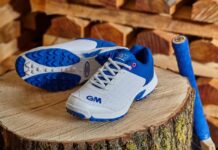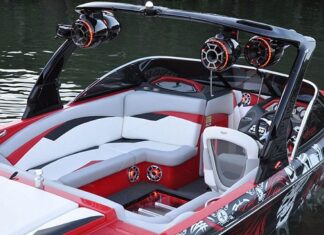
If you want to get your off-roading thrills and kick some dust, there’s no better way than with decently capable dirt bikes. They’re nimble, light, grunty and have all the suspension travel for any terrain. And they’ll take you anywhere you want, at speed. There’s some competition from big-engined and capable ATVs and side-by-sides, but you get more control, better handling, and faster braking on a well-specced bike.
With that said, there’s more in the way of maintenance (compared to road bikes anyway), as the bikes are used and abused on harsher terrains. Apart from regular engine and transmission issues (clogged air filters, oil leaks or slipping clutches), it’s the bodywork or dirt bike plastic that takes a beating in every ride. These protect vital bike parts from spraying mud, rocks, debris and anything else you come across. And they’re necessary to complete the whole dirt-bike aesthetic making space for graphics kits, rider and bike numbers and decals for a more personalised touch.
What are Dirt Bike Plastics?

Motocross and enduro bike plastics are bodywork parts, extending from the front fork foot protector to the swing arm protector at the rear, and covering everything in between. This includes parts like radiator shrouds, headlight shells and fairings, airbox covers, left and right side panels, front and rear fenders, tank covers and so much more. Parts are sold as individual pieces or come packaged as kits.
Their main purpose is to shield vital engine, drivetrain and suspension parts, as well as the rider in harsher riding conditions. While durable, they’ll pick up scratches, dents, scuffs or warp and break from impact during falls. And since they’re simple to manufacture, and come in varying designs, they’re a cost-effective way to protect more expensive bike components.
Why Consider Bike Plastics?
While the main aim is to keep expensive bike parts free from damage from flying rocks, mud, water and debris on dirt trails or during races, dirt bike plastic components also serve other purposes. One understated aim is appearance. All MX and Enduro bike manufacturers have their bodywork colours, as well as subtle design differences as a sign of brand recognition. In this context, plastics also aim to make your bike visually appealing. You can retain the OEM aesthetic, or go with changes offered by specialist aftermarket bodywork manufacturers. Mind, these still keep brand colours going, so you’ll immediately distinguish Honds red from Kawasaki green.
Related is the ease of customisation, to include parts that you want and need, or others that you don’t. To this end, there are varying kit options packaged with different bodywork.
Kit Types
This can range from individual parts, like damaged or broken front or rear fenders; standard bodywork kits including radiator shrouds and covers, air box covers, side panels, and front and/or rear fenders, and full bike plastic kits with all trim pieces included. This adds things like number plate covers, radiator scoops, tank covers, brake disc covers, fork guards and swingarm protectors for a rounded suite of protective parts covering most of the bike.
The Importance of Choosing the Right Materials

Choosing the right plastic determines durability, strength, and weight. Plastic is chosen for its balance between good strength and low weight. It’s also rust-resistant and easily shaped, compared to metal. However not all dirt bike plastic is created equal, and differing types perform differently.
Acrylonitrile butadiene styrene (ABS) is tough and used in parts prone to impact, such as side panels and protective guards. Polypropylene (PP) is a popular choice in parts exposed to liquids and chemicals, such as fenders, fuel tank covers and side panels. The material is chemically and heat resistant and deals well with mud, water, and oil. If you’re after increased scratch resistance, choose Nylon bike parts.
This appears in stock parts like gear levers, foot pegs and engine covers and can take a beating. Lastly, go with engineered thermoplastics for parts that are prone to bending. These are a mix of natural rubber and plastics and benefit from flexibility in areas like handlebar grips and seat covers. The main goal is to reduce vibrations and offer more comfort.
Sizes, Thickness and Compatibility
Overall thickness determines how effective bodywork plastics are in preventing common contaminants and debris from damaging the bike. Thinner pieces go for weight savings and are something that might work in racing but are limited in terms of how long they last. Thicker bodywork is also heavier, but more durable and recommended in everyday riding.
Related to this is sizing parts for a fuss-free fit, and parts that are compatible with your make and model. Aftermarket brands make this easier and cover all bike makers, including current and previous models. This is to ensure no installation issues, parts that work as intended and extended longevity. If you’re harder on your bike, then budget also plays a factor. Full kits make more financial sense on harder trails and bikes used frequently, but you can also save by opting for bike plastics on a need-to-buy basis.















